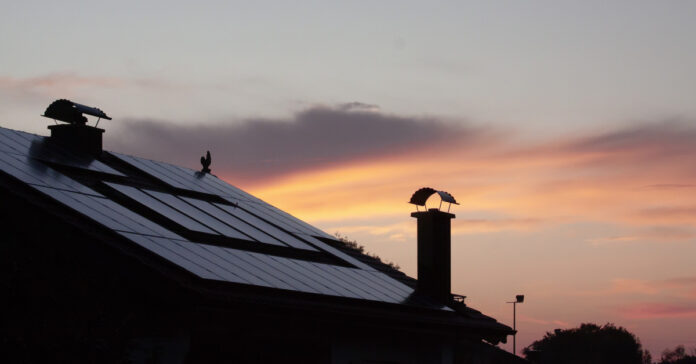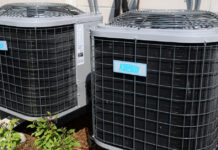Last week, I got a second quote from a different solar power installer. Instead of a local guy, this was from a larger company working out of one of the cities about 90 minutes away. So let’s see how the quotes line up and if this new bid will affect my decision to go solar.
The New Quote
This company was much more polished at sales. You can tell they are using a funnel to pre-qualify candidates because a sales assistant called within 30 minutes of filling out the online form and asked me a series of questions. I passed their test, so she set up a phone call with the sales person for a couple days later.
The sales person I talked to a few days later was knowledgeable and had originally joined the company as an installer. He asked more detailed questions and was able to answer many of my questions. We scheduled a time for him to come and meet with me.
In contrast, the original contractor called me on the phone, set up an appointment, came out to see the place, and then gave me a quote in about a week.
The rep for the new company actually sat down at the dining room table with me and my wife and gave us a lengthy (it was too long, honestly) presentation in which he presented four different options. Surprisingly, they were all similar and the price variation between the cheapest and most expensive was only $2,000. Three of the quotes were for Tesla equipment.
They did have some very impressive software that showed us a three-dimensional tendering of our roof, house, and property. It illustrated where the sun would shine at any time of the day on any day of the year. The images showed the best location for panels and how they would arrange them. They also provided more graphs showing monthly electric consumption versus production. The original estimate included none of this.
The Comparison
While the new company had better sales tool, their proposals were not as good. They offered us a smaller system, half the size, at only 25 percent less than our original quote.
| Component | Original Quote | New Quote |
| Solar panels | 32 producing 11.7 kW | 18 producing 7.3 kW |
| Inverter Size | 12 or 15 kW | 7.6 or 9 kW |
| Batteries | 27.5 kWh | 11.5 kWh |
As you can see, the new quote is not a winner from a price-per-kilowatt standpoint. System size is also an issue as it would only produce as much electricity as we use in June and July, the months when the sun is up the most and at an ideal angle. The rest of the year, we would not have enough electricity if we were to run in a grid-down scenario.
Our original quote, with higher nameplate capacity, would provide sufficient power for us in 11 out of the 12 months. The 12th month was close and we’d be OK if we ran the air conditioning only when the sun was shining.
Tesla Powerwall Issues
The Tesla Powerwall does not allow the homeowner to attach a generator to charge the batteries in a grid down scenario. While this would only be required during a multi-day grid-down scenario in which there was little or no sunshine, it’s an important component and a simple thing. I can’t believe they don’t offer it.
The older PowerWalls use NMC batteries which I don’t like. They are less stable than the LFP (or LiFePo4) technology used in the PowerWall 3 and most other lithium batteries designed for solar systems. While heavier, the LFP batteries give more cycles and have a longer life. They are also less likely to combust.
This would limit us to the new PowerWall3. Tesla has just introduced the Tesla PowerWall 3, so it doesn’t yet have a track record. I’m not sure I want new technology. I expect the new PowerWalls will have some problems when they roll them out commercially. While I might be comfortable purchasing one in six or eight months, I don’t want to be a guinea pig.
Selling What They Have
Decades ago, I complained to my boss that two different sales people were selling me two widely different solutions to the same problem. He laughed and said, “They can only sell what they have.” I took that lesson to heart, and I believe it applies here.
For example, the new vendor is a Tesla dealer so he wants to sell me what he has – a Tesla product. His quotes make Tesla look like the best option.
The original installer uses mostly Outback inverters for off-grid houses and SolArk for hybrid systems. He also has his favorite panels, and he likes certain brands of batteries, although he is more flexible than the newer installer. I believe he likes certain products because he has experience installing and commissioning them and knows it will be trouble-free. I can’t blame him for that. He’s running a business; the longer it takes him to install a system, the less money he makes.
Sadly, neither will sell me the specific brand of batteries I want. I am tempted to get a system without batteries and then add them on my own later. I’d much rather set up the batteries in my garage than climb up on the roof and attach solar panels. Besides, many of these batteries are plug-and-play.
My Conclusion
My conclusion is the newer vendor is used to installing solar for people who live in the city and want solar power because they are virtue signaling that they are green. Sure, maybe they want to cut their power bill, but they aren’t worried about living through a grid-down scenario. That’s why they don’t mind selling a system that is too small to meet our electrical demand and does not offer the possibility of generator backup.
Because he installs systems for people who live off-grid, the first vendor I spoke to is more attuned to what I am trying to achieve. I think this is why his system is so much larger. He sized the system to provide us with power in December as well as June.
My other conclusion is that the side of a mountain is not the best place to install a solar system. We’d produce more electricity if we were a farm house in the middle of a field with no hills to delay sunrise or trees to block the sun in the late afternoon. That’s a positive for those of you who have a homestead with plenty of flat pasture and fields.
Our Next Steps
I’ve already tracked down a third installer. He appears to be an electrician first and a solar installer second. We’ve exchanged an email but not yet spoken. My hope is that he will have more flexibility in installing a system that meets my needs, both terms of power production, product selection, and cost. If not, then I will stick with the first vendor.
I am also considering abandoning net metering, although this decision is not final. While net metering allows us to “sell” power back to the power company, it never completely erases your electric bill unless you unplug. (Well, it might in California, Nevada, Texas, or somewhere else very sunny almost all the time, but not here in the Appalachians where we get cloudy skies, lots of rain, and multiple snow storms every winter.) It may also depend on your state and utility as net metering agreements vary
I am learning that we can reduce our upfront costs and be up and running faster if we create a stand-alone or off-grid solar power system. As a result, I am now considering running the whole house on solar power, drawing from my batteries when there is no sun, and using the grid as a backup power source. This is the reverse of my initialplan to run on power, sell solar back the the utility, and use my batteries for backup power.
Under this plan, if we have multiple days of clouds, snow, or other conditions in which we do not produce sufficient power and our batteries run low, we will rely on grid power just as we do today. While we won’t be selling power back to the electric company under this scenario, we will not be buying as much power. In fact, if our system is sized correctly – and this comes down to battery capacity, which is expensive – I expect we can cut our bill by 85 percent year round and by 100 percent in summer months, regardless of whether we sell power back to the company or not.
Stay tuned. Our solar saga will continue.








